iPhone 11 Pro Max vs Galaxy Note 10+

Galaxy Note 10+ vs iPhone 11: Design
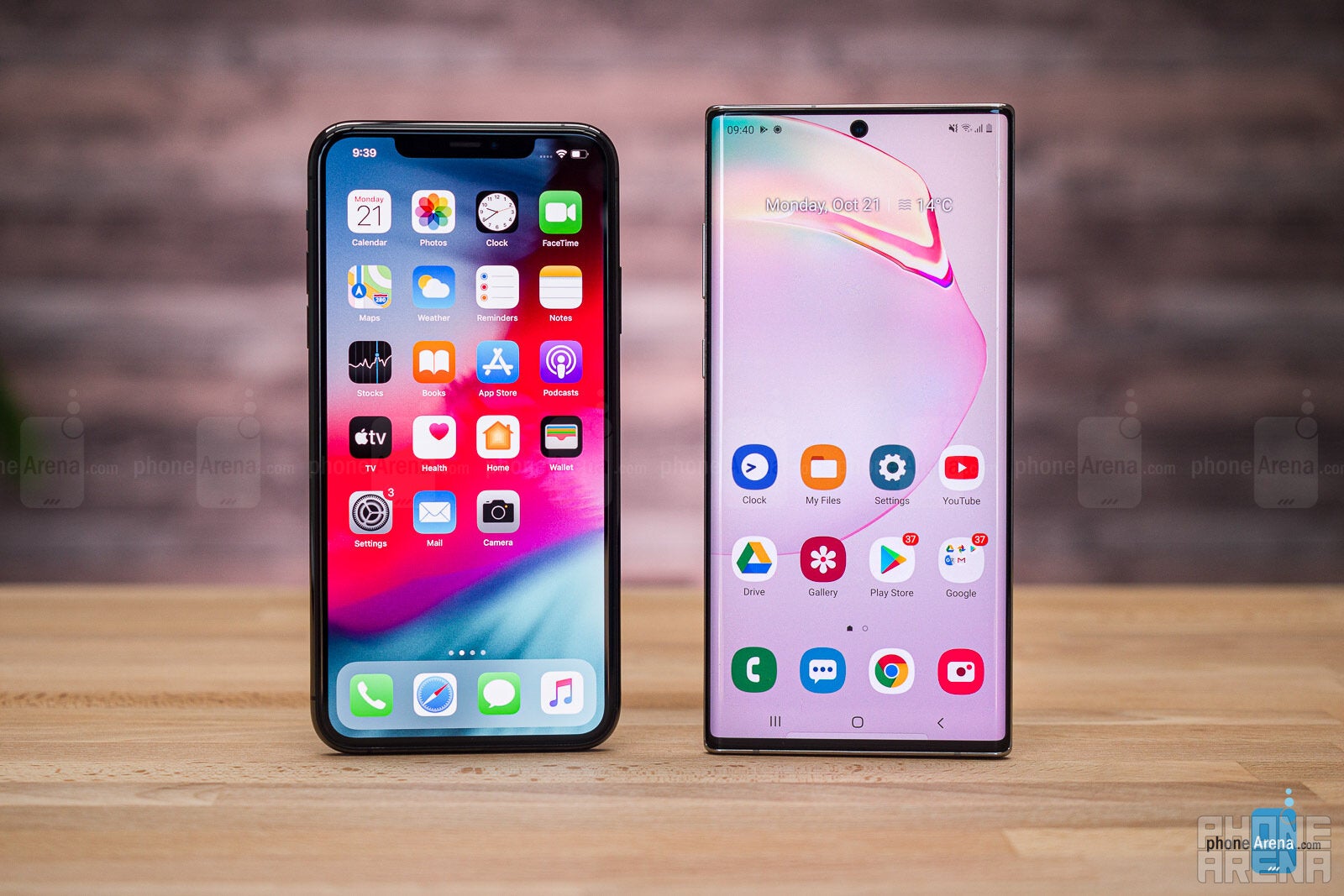
When we said “big boys” earlier, we meant it. Those are some large phones. Interestingly enough, however, the two companies went for two very different approaches this year and somehow both worked out well.
That quickly becomes apparent when you look at the two smartphones from the front. Samsung gave its 2019 Note a completely new look. Shaving off the thick top and bottom bezels allowed it to fit an even larger display in pretty much the same dimensions as those of last year’s Note 9. A small hole for the front-facing camera is the only thing that disrupts the massive 6.8-inch display with curved edges. The Note 10+ represents some of the best design work done by Samsung ever.
Both phones are now rocking triple camera setups, but once again, the approach is different. Samsung went for a more subtle arrangement in a compact vertical camera module. Meanwhile, Apple dialed it up to 11 with three large lenses popping out of a square camera bump, almost shouting at you “this is the new thing about this phone”. While some like that extravagant look, we’ll give another design point to the Note 10+ for being more elegant.
Beyond the cameras, both phones have glass backs, although Apple went for a matte finish on its Pro models, while the Note is shinier than ever with its “Glow” finishes. The frame of the iPhone is from stainless steel once again, compared to the aluminum one on the Note 10+. While stainless steel is a tougher material, this probably won't make a notable difference in your experience with the phone.
Galaxy Note 10+ vs iPhone 11: Display
As you might expect from their pedigree, these smartphones have some of the best displays on the market. Sure, they don’t have a 120Hz or even 90Hz refresh rate, but everything else is top-notch. The Note 10+ has a Dynamic AMOLED display with a 1440 x 3040 pixels resolution. It has gorgeous colors and gets bright enough for every environment. One thing that might irk some users is the slight darkening along the curved edges that is often combined with reflections of the light around you.
The iPhone 11 Pro Max has what Apple calls a Super Retina XDR display. Behind the fancy name stands an OLED screen with a resolution of 1242 x 2688 pixels that can get brighter than ever before. It’s not doing a bad job at color reproduction either, quite the contrary. Watching videos on this device is a pleasure and the improvements over the previous generation are noticeable. And of course, there’s still the notch that takes a bite out of the top of the display. We find it a lot more noticeable during media consumption than the camera hole on the Note 10+.
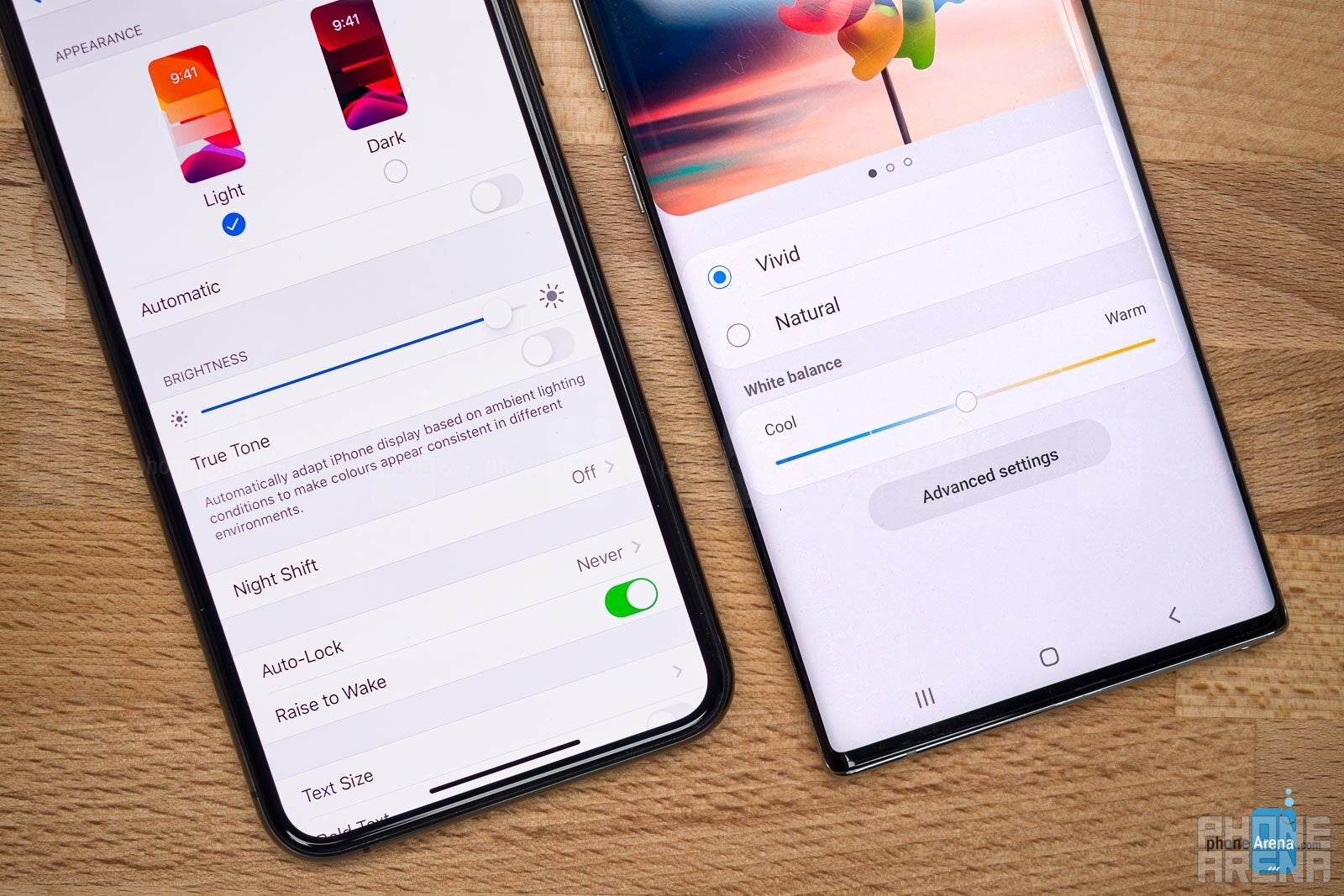
Galaxy Note 10+ vs iPhone 11: Hardware and performance
As we dive deeper, the two devices keep exchanging blows. Like true flagships, they come with all the best specs Samsung and Apple have to offer. The Galaxy Note 10+ comes with Qualcomm’s Snapdragon 855 while the iPhone 11 Pro Max is powered by Apple’s latest A13 Bionic chip. Here the iPhone gets a point without a question – the A13 is a monster when it comes to performance.
The situation is completely different when it comes to memory: the Note has three times more RAM than the iPhone 11 Pro Max. And while many will say RAM doesn’t matter so much on iPhones, the next category has a huge significance in real-life use and Apple’s device loses shamefully in it.
The Galaxy Note 10+ comes with 256GB of storage as standard, while the iPhone 11 Pro Max starts with just 64GB. Of course, there’s a 256GB version of the iPhone but it will cost you an additional $150. The Note 10+ also comes with a MicroSD card slot for expandable storage. What it doesn’t come with anymore, however, is a 3.5mm headphone jack, so now both the Note and the iPhone have the same audio options.
But what can you do with all that computational might you have at your disposal?
Galaxy Note 10+ vs iPhone 11: Interface and productivity
The Galaxy Note 10+ is currently running Samsung’s One UI based on Android 9 which was a major step forward as far as design and functionality go. The new software is a complete revamp of Samsung’s Android “skin” and brought gesture navigation and dark mode to its smartphones along with all the other smaller changes. For more details about the differences, you can check our comparison between One UI and Experience 9.
With the Galaxy Note 10+ there’s an extra layer of One UI that’s meant to work with the included S Pen. The floating dot lets you quickly select one of the unique features that the S Pen allows. This is what makes the Galaxy Note 10+ an unmatched device when it comes to productivity. You can quickly take notes, screenshot different parts of the screen and even add text to videos, all in a matter of seconds. And if you’re into digital art you can create full-blown drawings as we demonstrated in one of our videos.
Additionally, One UI lets you open multiple apps in pop-up windows you can resize and move around just like on your desktop computer, taking multitasking beyond Android’s standard split-screen view. Overall the Note10+ offers some great versatility no matter what you’re doing.
The same can’t be said for the iPhone 11 Pro Max. It’s running the latest iOS 13 which is as smooth as ever and has some much-requested features like swipe typing and dark mode as well. The new version is essentially more of the same but with improvements in speed and some design tweaks of various UI elements throughout Apple’s first-party apps.
What Apple’s stubbornly refusing to add, however, is support for split-screen multitasking. Despite iPhones having plenty of computing power inside them and generously large displays, you’re still bound by iOS’s limitations and this means one app at a time is all you can use.
Although it carries the “Pro” moniker and being the most expensive iPhone, when it comes to software, there’s nothing that differentiates the iPhone 11 Pro Max from other iPhones running iOS 13, some of which are several years old. On the bright side, that means that if you’re upgrading from an older iPhone you’ll have no trouble using the 11 Pro Max.
Of course, a major part of a smartphone’s usability today comes from third-party apps. Both the Google Play Store and Apple’s App Store offer millions of apps and usually, the most popular ones exist on both platforms. Despite Samsung’s efforts, most developers haven’t included unique functionalities for the S Pen so the two phones are more or less on equal terms.
Galaxy Note 10+ vs iPhone 11: Gaming
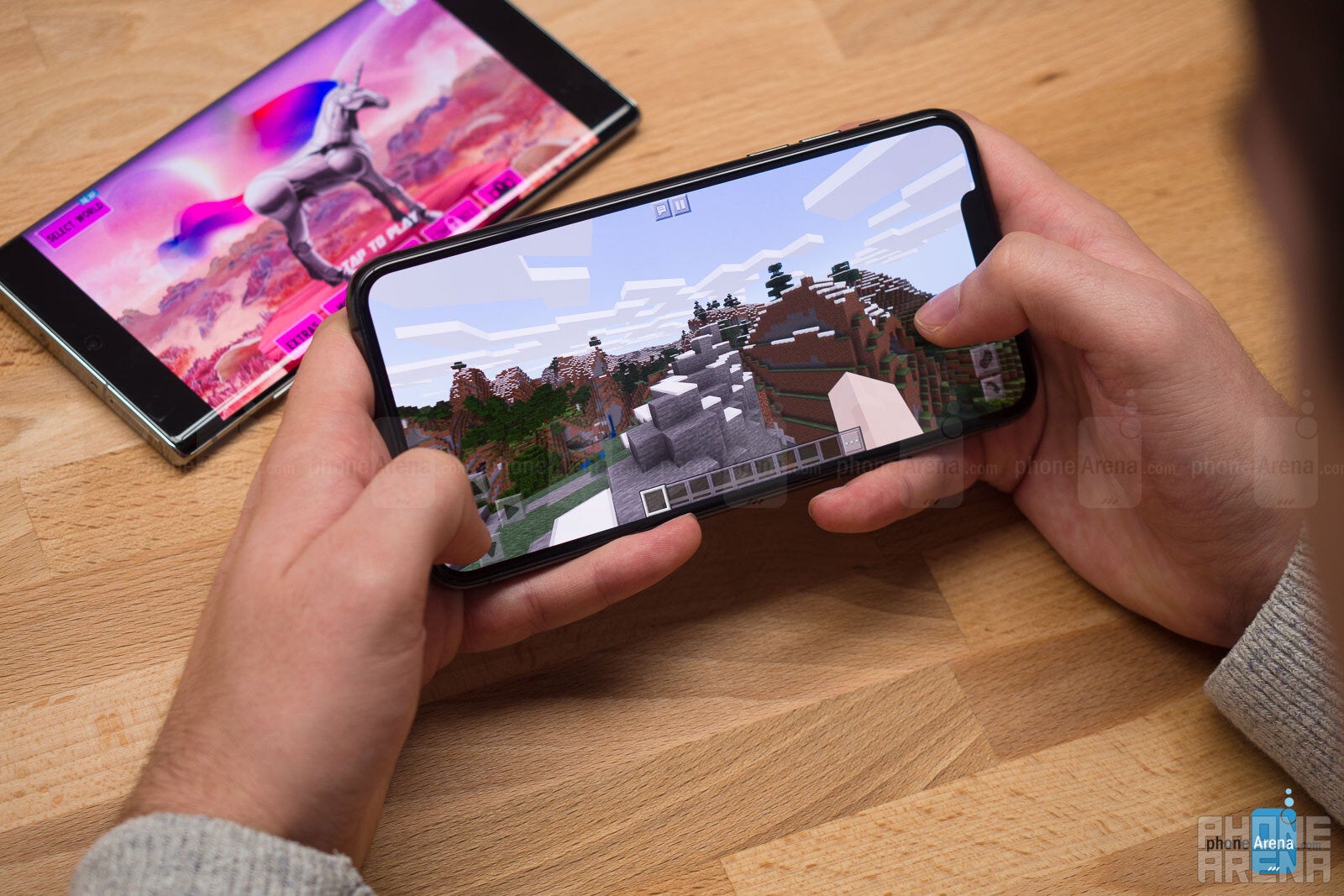
As you’ve probably already figured out after reading the Hardware section of this article, gaming on these two smartphones is a delightful experience. While the iPhone’s A13 chip offers more performance than the Snapdragon 855, once you hit 60 fps with the highest settings it’s pretty much e leveled field and the Note 10+ has no problem providing that as well.
Beyond the popular games that exist on both platforms, there is a set of exclusive titles you can have access to depending on the phone. Apple recently launched Apple Arcade which gives you access to exclusive games for a monthly fee of $4.99. You might be surprised to learn that there’s a similar service on Android. Google hasn’t done much advertising for it, but Google Play Pass is available in the US for $4.99 as well. That gives you access to a wide array of games without any ads or in-app purchases ruining your experience.
Galaxy Note 10+ vs iPhone 11: Camera
Finally, it’s time to take a look at the cameras. Both phones come with a similar array of sensors at their disposal: 12MP main cameras, 12MP telephoto cameras and ultra-wide cameras with 12MP on the iPhone and 16MP on the Note. Samsung’s phone also comes with a dedicated Time-of-Flight sensor for improved depth of field perception when taking portrait shots. At the front, the iPhone comes with a 12MP selfie shooter while the Note 10+ has a 10MP one. So, overall, hardware-wise the two devices are quite equal. But as we know, these days it’s the software that makes or breaks a smartphone’s camera. Let’s see how these two did in the field!
Daytime photos
Most phones today are doing a decent job during the day but there are still certain scenarios that can trip even the best of cameras. For example, a strong backlight, such as the sun, behind the object you’re trying to photograph.
Here the results are quite different. The iPhone’s photo conveys a totally different emotion. The focus is on the sunlight’s reflection on the sea which has a luring appeal, while everything else is darker and kind of in the way. The Note 10+ has managed to pull more color out of the shadowy areas but at the cost of losing some of the character of the shot.
When the conditions aren’t as challenging, the two phones take photos that people will prefer mostly according to their own taste rather than objective characteristics. The pink flowers, for example, are more accurately represented by the iPhone while the Note 10+ has increased the color saturation to make them pop. With the bench shot, the situation is similar, the colors of the Note 10+ are more vivid and the sharpness is obviously higher than that of the iPhone. Still, some people don’t like the slight feel of fakeness that usually comes with these adjustments.
The ultra-wide-angle cameras also give similar results but the iPhone’s picture has that yellowish tint that’s been characteristic for iPhone cameras for years now.
Portrait shots
Portraits are an important segment of smartphone photography these days so let’s check a few examples.
The first scene is extremely challenging because there’s a lot going on. The phones have to determine which objects should be blurred from a maze of branches and accurately track all the pointy edges of the leaves. Overall, both photos look great but if we focus on the subject we’ll see that the iPhone has preserved more face details while on the Note 10+ some areas seem almost as if airbrushed.
On the second scene, we have a brightly lit side and a shadowy side. The iPhone’s HDR has handled the situation much better and managed to produce a very balanced and good looking image. On the Note, the bright spots are blown out and the rest of the face is visibly darker than it is on the iPhone.
With the sun shining full force behind the subject both photos aren’t really good enough to even post on social media. The iPhone is again brighter but there’s so much noise around the face that it’s not really pleasant to look at. Still, if we had to pick a winner, it would be the iPhone.
This time the better picture is obviously the one from the iPhone 11 Pro Max. There’s a ton more detail in the brightly lit part of the tail and on the back of the cat as well. The bokeh separation is also done better on the iPhone. The photo from the Note 10+ isn’t bad by any means and if you don’t have the one from the iPhone beside it most people will be pretty happy with the result from the Samsung device.
Galaxy Note 10+ vs iPhone 11: Selfies
We can’t forget the selfie cameras, of course! They’re a vital part of every smartphone.
Here opinions might differ but we’re giving a point to the Note 10+. The colors are richer and give the photo a nice vibe. Both phones did great with the bokeh effect.
In the group selfie scene, the iPhone’s photo is brighter but the yellow tint is so strong it looks like it was made during a different time of the day. The Note 10+ has more natural colors but with deeper shadows which we prefer in this case. The backlit shot is a clear win for the Note, a perfectly decent selfie despite the bright sun behind the subject.
For a deeper dive into the world of selfies, check our most recent selfie comparison where we put head to head the top dogs in that field.
Night shots
The iPhone 11 Pro Max has a night mode that activates automatically while on the Note 10+ you have to select it manually whenever you deem necessary. We’re not going to get into the nitty-gritty of night shots, but we do have a few examples to check out.
In the first scene, the Note did a better job at controlling the bright neon signs and there’s noticeably less noise in the darker areas of the picture. The graffiti pictures are almost identical but that iPhone hue is showing up once more. Of course, that can be handled with some additional processing of the picture but we’re showing them the way they were taken with auto mode.
Galaxy Note 10+ vs iPhone 11: Battery life
Both the Note 10+ and the 11 Pro Max got a bump in battery capacity compared to their predecessors but the effect that had on their respectable battery life is quite different. Despite the extra 300mAh, the Note 10+ has a slightly worse battery life than the Note 9, perhaps due to the larger display. Meanwhile, the iPhone 11 Pro Max gains hours of battery life and is now one of the best smartphones in that category.
We’re currently working on a new battery test and preliminary results show that the 11 Pro Max has the best battery life from all the devices we’ve tested so far, almost an hour more than the Note 10+, which sits at the number 2 spot. One thing is certain, however, that extra thickness of the iPhone 11 Pro Max is worth it, the phone lasted 3 and a half hours more than the iPhone XS Max.
Galaxy Note 10+ vs iPhone 11: Which one should you buy?
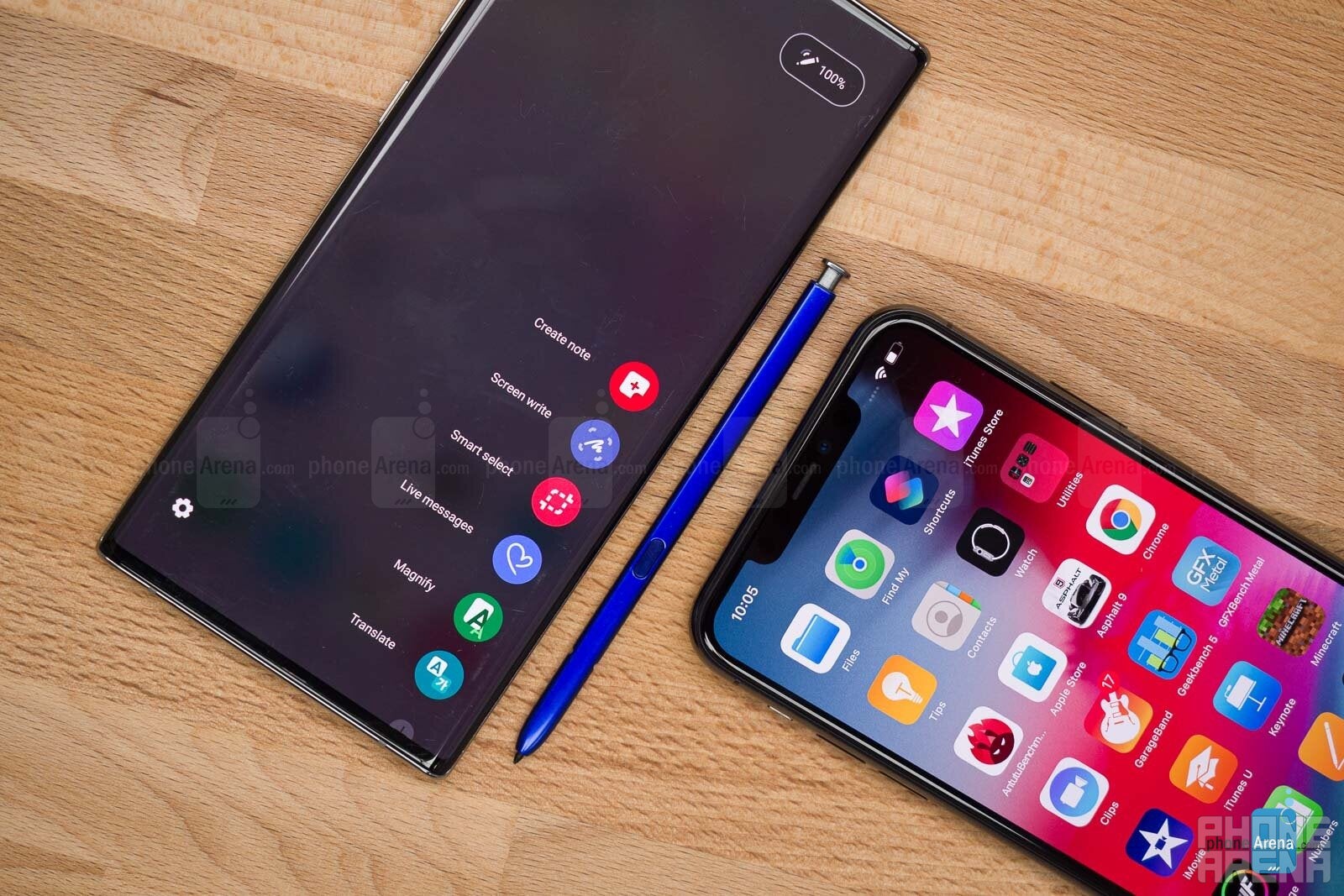
Note 10+ vs iPhone 11, which one should you get?
Saying which one of these two phones is strictly better is almost impossible and that’s mainly because of the S Pen. You can’t really replace the S Pen with anything and if you’re the type of user that would make the best of it on a daily basis then the iPhone has nothing to offer that will compensate for it. And if you’re not, then the Note is in a handicapped position because recommending it to users that don’t need an S Pen means that you’re asking them to pay extra for nothing. Still, though, since they start at the same price ignoring the S Pen is not that big of a deal.
Aside from the huge difference in base storage, neither phone is consistently significantly better than the other to the point that it’s the obvious preferred choice. And when you add to that the completely different ecosystems they exist in, it gets even harder. Once again, ultimately it’s up to the individual to evaluate which categories matter to them the most and which device will be a better fit in the long run. Ball’s in your court, good luck!

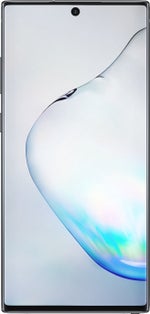





























Things that are NOT allowed: